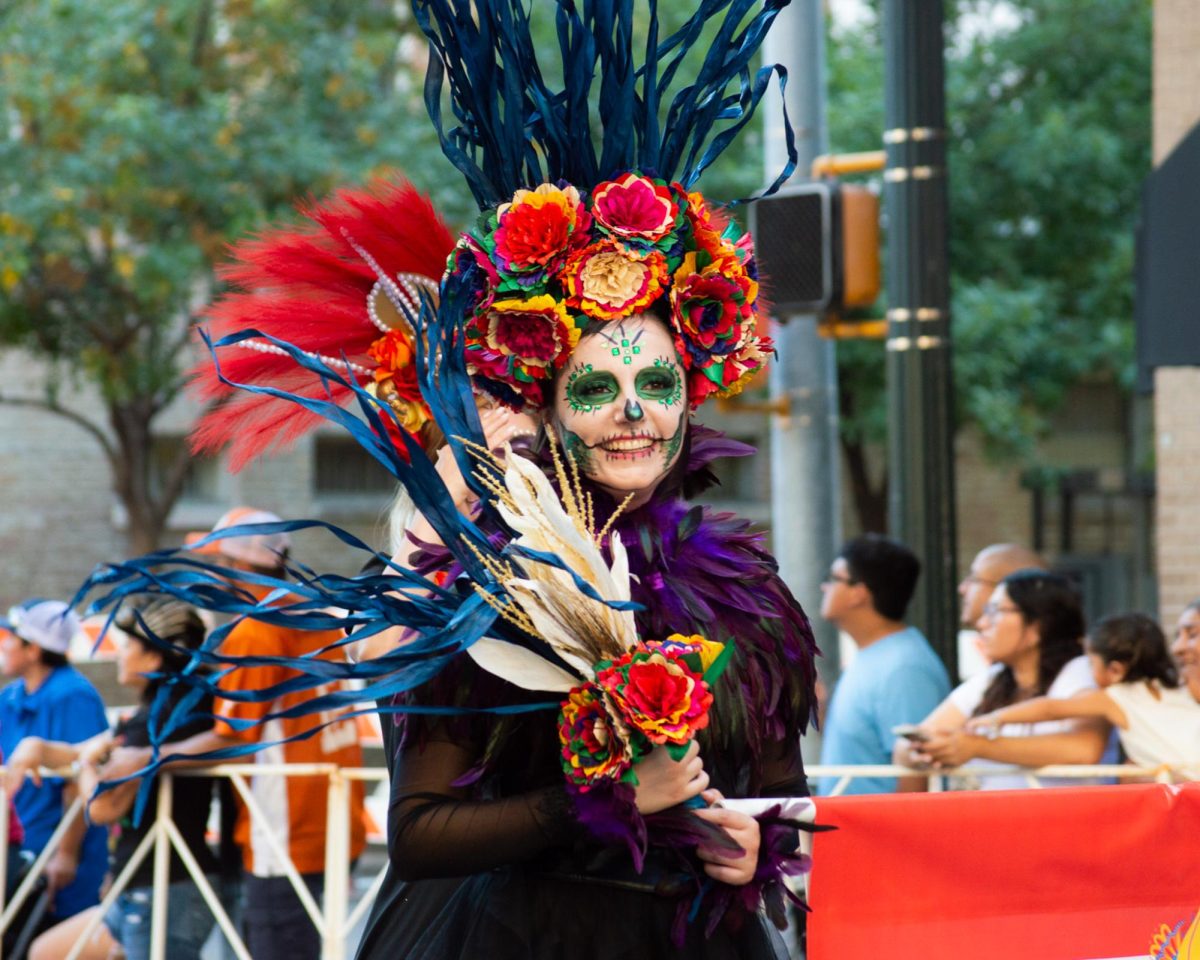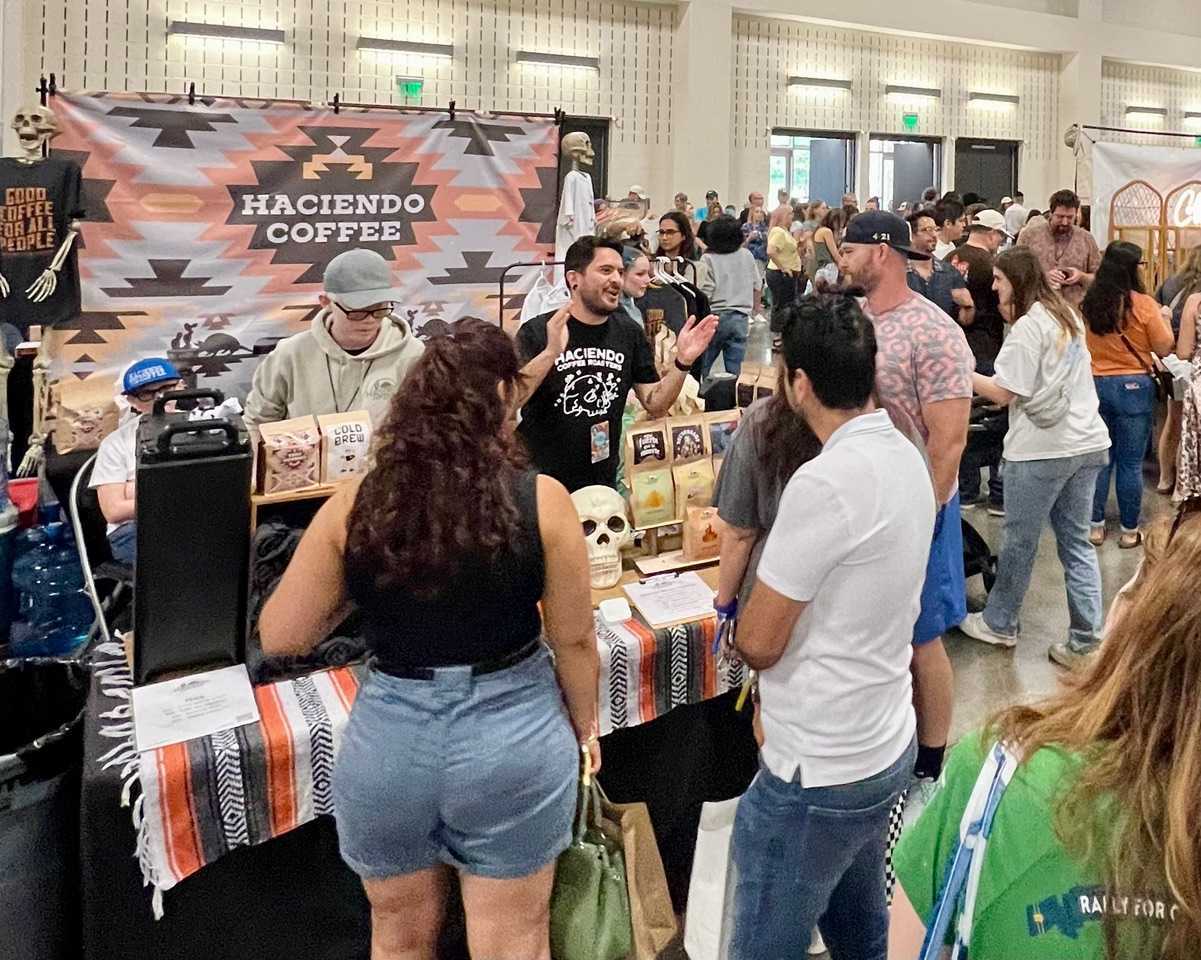On Wednesday night, the Division of Housing and Food Service hosted a “Mexican American Cultural Dinner,” publicized as a “chance to get acquainted with authentic Mexican cuisine as we celebrate the country’s rich culture.” The menu boasted soups, salads, tacos, “street food,” desserts and, to ripen the deal, a live mariachi band. Lured by the promise of all-you-can-eat culturally inspired cafeteria food, including unlimited Mexican “pan dulces,” I immediately saved the date. I expected to gorge on food that resembled “authentic Mexican” only to the same extent that Taco Bell resembles Guadalajaran street fare. I hoped to win a limited-edition DHFS T-shirt. Lucky for me, the event met my expectations perfectly: I walked away from Kinsolving with a stomach full of decent but forgettable food and a back draped in a free shirt.
Walking into Kinsolving, I noticed two things immediately: that distinctive Kinsolving smell was just a tad spicier, and DHFS had set up a fiesta-colored photo booth in which I could force my dinner companions to participate. I bolted for the dining room. I started my feast with the advertised “Achiote Grilled Shrimp Taco,” which was less grilled than it was boiled for 24 hours until indecipherable in texture from lumpy mashed potatoes. Served on a limp white tortilla, the flavor contained notes of both imitation shellfish and store-brand taco seasoning. Alarmingly, the rice served as a side had nearly the same texture and flavor as the shrimp. Although I am admittedly not a Mexican cuisine expert, I suspect that you won’t find overcooked shellfish tossed in Hamburger Helper being peddled by the street vendors of Jalisco. I ate it anyway, because that’s what Kins is for.
Luckily, DHFS prepared a relative hit with the refried beans, which tasted like refried beans — a sure success. My main course, a “Pamboso with chorizo and potatoes topped with Guajillo sauce,” deviated from the menu’s steady course of mediocrity, though not its trend of cultural inaccuracy — pamboso is more accurately spelled “pambazo,” a type of bread. . The dish, however, stood out from Kinsolving’susual offerings. The flat pambazo had a floury crust and a chewy center that dutifully soaked up the near-flavorless Guajillo sauce on top. The chorizo and potatoes tossed in the sauce met expectations: slightly mushy and decidedly flavorless. Again, I ate it all. I finished my meal with the “pan dulces,” Mexican sweet breads, a mostly inoffensive-tasting group of sugary pastries with unfamiliar names. Despite eating more than three plates of food, I left hungry.
While DHFS may have failed at crafting a satisfying and authentic Mexican meal, it succeeded in spicing up the usual dining environment. Throughout the meal, the mariachi band played both as a group for a crowd and as solo performers, breaking up to sit separately in dining hall chairs. Attendees seemed to enjoy the festive atmosphere. At the table beside mine, Nathan Vest, a history junior, declared that Kinsolving was “the most bopping place north of the border.”
DHFS could have more accurately described the menu as “normal cafeteria food with too much taco seasoning and a creative presentation, eaten to the sound of mariachi music instead of the monotonous drone of conversation.” Maybe next time it can cut the budget for culturally inspired decorations and entertainment and focus on buying fresh ingredients.




















